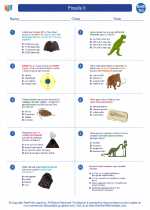Lungs
The lungs are a vital organ in the respiratory system responsible for gas exchange. They are located in the thoracic cavity, protected by the rib cage, and are divided into two main sections - the right lung and the left lung. The main function of the lungs is to oxygenate the blood and remove carbon dioxide from the body through the process of respiration.
Anatomy of the Lungs
The lungs are composed of various structures including bronchi, bronchioles, alveoli, and blood vessels. The bronchi are the main airways that branch off from the trachea and lead to the bronchioles, which then connect to the alveoli - tiny air sacs where gas exchange takes place. The lungs are also surrounded by a thin membrane called the pleura, which helps protect and cushion the lungs.
Respiration
Respiration is the process of inhaling oxygen and exhaling carbon dioxide. When we inhale, the diaphragm and intercostal muscles contract, causing the chest cavity to expand and air to be drawn into the lungs. Oxygen from the air then diffuses into the blood through the alveoli, while carbon dioxide from the blood diffuses into the alveoli to be exhaled during exhalation.
Common Lung Conditions
There are several common lung conditions that can affect respiratory function, including asthma, chronic obstructive pulmonary disease (COPD), pneumonia, and lung cancer. It's important to maintain lung health through regular exercise, avoiding smoking and exposure to pollutants, and seeking medical attention for any respiratory symptoms.
Study Guide
- Describe the location and protection of the lungs within the body.
- Explain the process of gas exchange in the lungs.
- Identify and describe the main structures of the lungs, including the bronchi, bronchioles, and alveoli.
- Discuss the role of the diaphragm and intercostal muscles in the process of respiration.
- List and describe common lung conditions and their potential causes.
Understanding the anatomy and function of the lungs is essential for comprehending the respiratory system and the importance of maintaining lung health. Studying these concepts will provide a solid foundation for further exploration of respiratory physiology and pathology.
.


